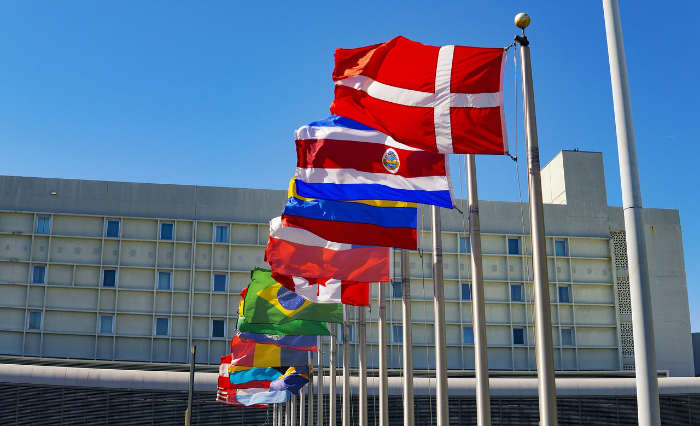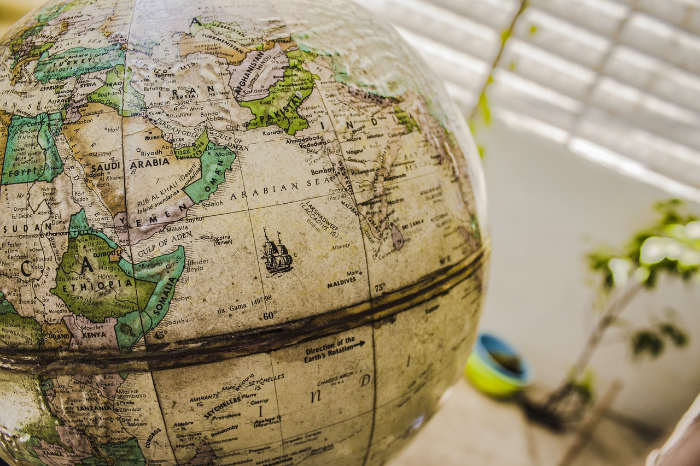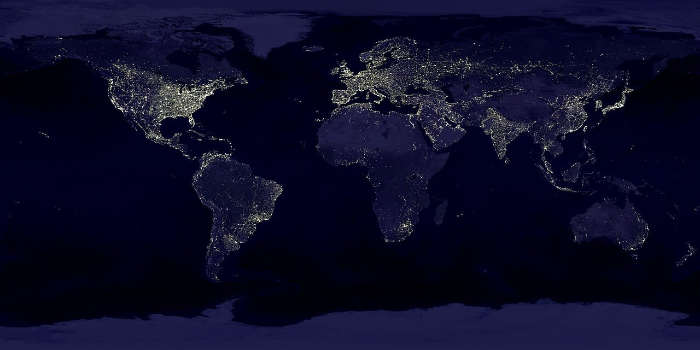Most Productive Countries 2025

$20K
$40K
$60K
$80K
$100K
$120K
$140K
5 Most Productive Countries
Country | GDP per Capita (INT$) 2022 ↓ | GDP per Hours Worked 2022 | GDP per Person Employed 2022 | |
|---|---|---|---|---|
 | Luxembourg | $137,947 | $131 | $190,754 |
 | Singapore | $118,888 | ||
 | Ireland | $114,121 | $163 | $269,404 |
 | Qatar | $102,506 | ||
 | Norway | $86,892 | $162 | $230,723 |
 | Bermuda | $86,699 | ||
 | Switzerland | $81,603 | $101 | $153,689 |
 | United Arab Emirates | $77,273 | ||
 | Cayman Islands | $76,581 | ||
 | Macau | $73,734 | ||
 | United States | $70,220 | $92 | $160,484 |
 | Denmark | $69,879 | $104 | $145,259 |
 | San Marino | $67,983 | ||
 | Netherlands | $67,693 | $92 | $129,907 |
 | Brunei | $66,348 | ||
 | Hong Kong | $66,249 | ||
 | Austria | $63,421 | $95 | $137,352 |
 | Sweden | $63,375 | $96 | $137,757 |
 | Belgium | $62,107 | $100 | $156,511 |
 | Germany | $61,940 | $91 | $122,429 |
 | Iceland | $61,481 | $90 | $131,433 |
 | Finland | $57,849 | $85 | $126,970 |
 | Australia | $57,406 | $79 | $133,333 |
 | Canada | $55,635 | $72 | $121,167 |
 | Bahrain | $54,902 | ||
 | France | $53,835 | $87 | $130,196 |
 | Malta | $53,387 | ||
 | United Kingdom | $52,842 | $77 | $117,527 |
 | Saudi Arabia | $51,607 | ||
 | Kuwait | $50,295 | ||
 | Italy | $49,913 | $74 | $127,579 |
 | South Korea | $48,595 | $50 | $94,963 |
 | New Zealand | $48,556 | $54 | $95,142 |
 | Cyprus | $48,469 | ||
 | Czech Republic | $48,418 | $57 | $101,472 |
 | Slovenia | $46,502 | $62 | $100,071 |
 | Lithuania | $46,410 | $61 | $99,344 |
 | Israel | $46,127 | $59 | $110,697 |
 | Estonia | $45,047 | $55 | $97,248 |
 | Japan | $44,292 | $53 | $85,816 |
 | Spain | $43,621 | $69 | $113,682 |
 | Sint Maarten | $42,329 | ||
 | Aruba | $41,196 | ||
 | Poland | $40,463 | $56 | $101,657 |
 | Portugal | $38,783 | $56 | $91,951 |
 | Hungary | $38,644 | $52 | $87,965 |
 | Romania | $37,971 | ||
 | Oman | $37,843 | ||
 | Slovakia | $37,795 | $57 | $91,779 |
 | Croatia | $36,954 | ||
 | Latvia | $36,778 | $58 | $89,984 |
 | Puerto Rico | $36,157 | ||
 | Bahamas | $33,615 | ||
 | Panama | $33,564 | ||
 | Russia | $33,186 | ||
 | Greece | $33,018 | $45 | $84,460 |
 | Turkey | $31,638 | $61 | $106,131 |
 | Seychelles | $30,818 | ||
 | Bulgaria | $29,407 | ||
 | Saint Kitts and Nevis | $29,198 | ||
 | Chile | $29,148 | $36 | $69,701 |
 | Malaysia | $29,139 | ||
 | Kazakhstan | $28,812 | ||
 | Uruguay | $25,663 | ||
 | Trinidad and Tobago | $25,420 | ||
 | Montenegro | $24,511 | ||
 | Guyana | $24,194 | ||
 | Argentina | $23,835 | ||
 | Costa Rica | $23,700 | ||
 | Curacao | $23,273 | ||
 | Mauritius | $23,079 | ||
 | Antigua and Barbuda | $22,622 | ||
 | Serbia | $22,575 | ||
 | Libya | $22,371 | ||
 | Belarus | $21,929 | ||
 | Turks and Caicos Islands | $21,808 | ||
 | Mexico | $21,124 | $24 | $53,402 |
 | Maldives | $20,698 | ||
 | Dominican Republic | $20,553 | ||
 | North Macedonia | $19,903 | ||
 | China | $19,485 | ||
 | Thailand | $18,855 | ||
 | Bosnia and Herzegovina | $18,380 | ||
 | Colombia | $17,587 | $21 | $49,330 |
 | Georgia | $17,089 | ||
 | Iran | $16,557 | ||
 | Botswana | $16,449 | ||
 | Suriname | $16,344 | ||
 | Albania | $16,263 | ||
 | Brazil | $16,260 | ||
 | Equatorial Guinea | $16,255 | ||
 | Azerbaijan | $15,927 | ||
 | Armenia | $15,676 | ||
 | Palau | $15,573 | ||
 | Barbados | $15,304 | ||
 | Saint Vincent and the Grenadines | $15,271 | ||
 | Gabon | $15,253 | ||
 | Moldova | $15,122 | ||
 | Grenada | $15,105 | ||
 | Paraguay | $15,091 | ||
 | South Africa | $14,718 | ||
 | Sri Lanka | $14,622 | ||
 | Saint Lucia | $14,396 | ||
 | Lebanon | $14,331 | ||
 | Ukraine | $14,289 | ||
 | Peru | $13,831 | ||
 | Egypt | $13,441 | ||
 | Indonesia | $13,086 | ||
 | Mongolia | $12,876 | ||
 | Bhutan | $12,795 | ||
 | Algeria | $12,170 | ||
 | Nauru | $12,127 | ||
 | Dominica | $12,027 | ||
 | Ecuador | $11,773 | ||
 | Vietnam | $11,728 | ||
 | Tunisia | $11,472 | ||
 | Fiji | $11,453 | ||
 | Jamaica | $10,599 | ||
 | Jordan | $10,351 | ||
 | Namibia | $10,161 | ||
 | El Salvador | $10,141 | ||
 | Eswatini | $10,027 | ||
 | Guatemala | $9,851 | ||
 | Belize | $9,740 | ||
 | Iraq | $9,696 | ||
 | Philippines | $8,933 | ||
 | Morocco | $8,901 | ||
 | Bolivia | $8,886 | ||
 | Laos | $8,659 | ||
 | Uzbekistan | $8,608 | ||
 | India | $7,368 | ||
 | Cape Verde | $7,014 | ||
 | Tonga | $6,779 | ||
 | Marshall Islands | $6,594 | ||
 | Angola | $6,524 | ||
 | Bangladesh | $6,523 | ||
 | Nicaragua | $6,281 | ||
 | Palestine | $6,225 | ||
 | Honduras | $6,149 | ||
 | Samoa | $6,107 | ||
 | Ghana | $5,982 | ||
 | Ivory Coast | $5,867 | ||
 | Pakistan | $5,775 | ||
 | Mauritania | $5,674 | ||
 | Timor-Leste | $5,560 | ||
 | Nigeria | $5,432 | ||
 | Kyrgyzstan | $5,418 | ||
 | Djibouti | $5,413 | ||
 | Kenya | $5,237 | ||
 | Tuvalu | $5,081 | ||
 | Cambodia | $4,805 | ||
 | Myanmar | $4,540 | ||
 | Tajikistan | $4,315 | ||
 | Nepal | $4,252 | ||
 | Sudan | $4,084 | ||
 | Republic of the Congo | $4,083 | ||
 | Cameroon | $4,071 | ||
 | Papua New Guinea | $4,014 | ||
 | Senegal | $3,875 | ||
 | Sao Tome and Principe | $3,865 | ||
 | Benin | $3,665 | ||
 | Micronesia | $3,665 | ||
 | Zambia | $3,628 | ||
 | Comoros | $3,563 | ||
 | Haiti | $3,179 | ||
 | Vanuatu | $3,090 | ||
 | Guinea | $2,914 | ||
 | Tanzania | $2,852 | ||
 | Solomon Islands | $2,645 | ||
 | Ethiopia | $2,559 | ||
 | Uganda | $2,479 | ||
 | Lesotho | $2,471 | ||
 | Rwanda | $2,469 | ||
 | Burkina Faso | $2,401 | ||
 | Togo | $2,351 | ||
 | Mali | $2,340 | ||
 | Zimbabwe | $2,334 | ||
 | Gambia | $2,291 | ||
 | Kiribati | $2,216 | ||
 | Guinea-Bissau | $2,021 | ||
 | Sierra Leone | $1,782 | ||
 | Afghanistan | $1,673 | ||
 | Malawi | $1,645 | ||
 | Madagascar | $1,636 | ||
 | Somalia | $1,609 | ||
 | Chad | $1,573 | ||
 | Liberia | $1,571 | ||
 | Mozambique | $1,359 | ||
 | Niger | $1,309 | ||
 | DR Congo | $1,185 | ||
 | Central African Republic | $925 | ||
 | Burundi | $788 |
- Palestine data includes West Bank, but excludes Gaza Strip.
Which countries are the most economically productive? The answer can be challenging to determine because different countries specialize in different industries. One country may be a global leader in manufacturing, another at agriculture, and a third in financial services and tourism. In order to create an even and objective basis of comparison, economists use metrics such as Gross domestic product (GDP) and Gross National Income (GNI), which measure the monetary value of all of the goods and services of any type created by a country (GDP) or its people (GNI).
GDP is typically measured in U.S. dollars (USD) or international dollars (INT$), an imaginary currency used to make country-to-country comparisons easier. However, GDP is a measure of total output. In order to arrive at a measure of efficiency, GDP must be divided by the number of people in the country (or, even more accurately, by the number of people actually employed) to determine the country’s output per person (typically referred to as per capita).
Top 10 Most Productive Countries in the World (GDP per Capita, PPP INT$)
Country | GDP per Capita (INT$) 2022 |
|---|---|
| Luxembourg | $137,947 |
| Singapore | $118,888 |
| Ireland | $114,121 |
| Qatar | $102,506 |
| Norway | $86,892 |
| Bermuda | $86,699 |
| Switzerland | $81,603 |
| United Arab Emirates | $77,273 |
| Cayman Islands | $76,581 |
| Macau | $73,734 |
While most industries are profit- and efficiency-focused, some are more efficient than others, and a few likely played a large role in helping their respective countries land in the top 10. Luxembourg, Singapore, Bermuda, Switzerland, and the Cayman Islands are all among the world’s leading tax haven countries (as is Ireland by many definitions), which generates substantial business in their financial sectors. Qatar has a tiny population but is one of the world’s leading exporters of oil and natural gas. Qatar also benefits from a strong tourism industry, as do Macau, Bermuda, and the Cayman Islands.
Helpful as it is, GDP per capita alone does not provide a complete impression of productivity because it does not consider the number of hours worked in an average work week varies significantly between countries, which is vital when measuring productivity. To provide a more complete economic analysis, economists have devised measures such as GDP per hour worked, which is a measure of a country’s productivity, excluding unemployment or hours worked per week.
Top 10 Most Productive Countries in the World (GDP per Hour Worked, USD)
Country | GDP per Hours Worked 2022 |
|---|---|
| Ireland | $163 |
| Norway | $162 |
| Luxembourg | $131 |
| Denmark | $104 |
| Switzerland | $101 |
| Belgium | $100 |
| Sweden | $96 |
| Austria | $95 |
| Netherlands | $92 |
| United States | $92 |
Gross domestic product (GDP) refers to the total monetary value of the goods and services produced within one country. Purchasing power parity (PPP) is a macroeconomic metric used to compare economic productivity and living standards between nations. GDP (PPP) uses nominal GDP adjusted for the relative cost of local goods, services, and inflation rates of the country, rather than using international market exchange rates.
GDP (PPP) per hour worked measures how efficiently labor input, the total hours worked by all of the persons engaged in production, is combined with other factors of production and used in the production process. We can refer to GDP (PPP) per hour as productivity per hour. Below are the ten most productive countries and their average work weeks.
1. Ireland
As of 2022 data, Ireland’s productivity per hour is the highest of any country at $163. Full-time Irish employees work about 39.7 hours per week. Ireland’s high concentration of multinationals drives its largest productivity gains. Labor productivity grew an average of 3.3% between 2000 and 2022.
2. Norway
Norway’s productivity per hour is $162, just behind Ireland. Norway’s full-time workers average about 38 hours per week, placing the country among those with the shortest workweeks in the OECD. Work-life balance is highly valued, and family is a greater priority than work. Parents are often allowed to leave work early to pick up their kids from school. Norwegians are known for being extremely efficient and task-oriented at work and can shut out their jobs from their lives once the clock hits 4 p.m. (the typical end time of a Norwegian workday).
3. Luxembourg
Luxembourg’s productivity per hour is $131. The average workweek in Luxembourg is about 39.5 hours. It is believed that the main reason for Luxembourg’s high productivity levels is its financial sector. If Luxembourg were to adopt the Scandinavian work-life balance, it is believed that productivity would increase even more.
4. Denmark
Denmark is the fourth-most productive country in the world at $104 per hour worked. Denmark has the shortest average workweek of just 37.2 hours for full-time employees of the OECD member countries. Denmark will need to continue to grow its worker productivity to keep up with its welfare system and aging population.
5. Switzerland
Switzerland is the fifth-most productive country. Per hour worked, Swiss workers add $101 to the economy. The average workweek for full-time employees is approximately 41 hours, and only 0.4% of employees work over 50 hours per week.
6. Belgium
Belgian workers contribute an even $100 to Belgium’s GDP (PPP) per hour worked, making Belgium the sixth-most productive country in the world. The average workweek for full-time employees in Belgium is about 38.8 hours. Employees have strong skills and are highly educated, allowing them to enjoy high wages, relatively low inequality, and an excellent work-life balance.
7. Sweden
The seventh-most productive country is Sweden, whose $96 per hour is delivered in large part by the country’s export-oriented economy. Sweden produces a vast range of products, including timber and other forestry products, pharmaceuticals, iron and steel products, hydroelectric power, motor vehicles, telecommunications equipment, other industrial machines and precision equipment, home appliances, and more. Also, like so many other top 10 countries, Sweden features an expansive financial services sector.
8. Austria
One of the richest countries in the EU, Austria’s score of $95 per hour worked comes courtesy of a well-rounded economy. In addition to a highly developed industrial sector, the country also enjoys a burgeoning tourism industry (winter sports enthusiasts are increasingly drawn to the country’s slopes) and a massive financial services trade.
9. Netherlands
The Netherlands consistently ranks among the most productive countries in the world, with each hour worked adding about $92 to the economy. Full-time employees work an average of 36.4 hours a week—the shortest on this list—which helps the Dutch maintain their work-life balance. A highly educated and skilled workforce, combined with modern infrastructure and great transport links, keeps the economy humming. With strong wages and low income inequality, the Netherlands offers a welcoming environment for both locals and international workers alike.
10. United States
The United States ties with the Netherlands for productivity at $92 per hour worked. American full-time employees work 41.5 hours per week, and about 11.1% of employees work over 50 hours per week – among the highest in the OECD. While the U.S. is still in the top 10 on this list, this shows that many Americans live to work instead of working to live.



















